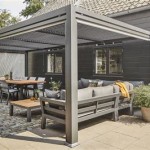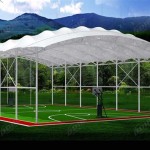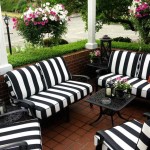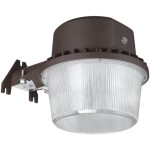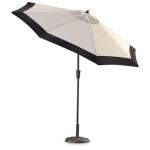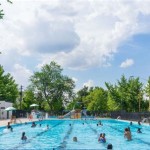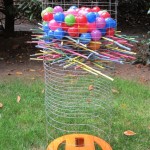Heavy Duty Outdoor Plastic Chairs: Durability and Versatility in Outdoor Seating
Outdoor seating requires furniture that can withstand a variety of environmental challenges. Rain, sun, wind, and temperature fluctuations can quickly degrade materials not specifically designed for outdoor use. Heavy-duty outdoor plastic chairs offer a compelling solution, combining durability, maintainability, and cost-effectiveness. This article delves deep into the features, benefits, and considerations when choosing heavy-duty outdoor plastic chairs, providing a comprehensive understanding of their suitability for diverse outdoor settings.
One of the primary advantages driving the popularity of these chairs is their inherent resistance to weathering. Unlike metal, which can rust and corrode, or wood, which can rot and splinter, high-quality outdoor plastic is impervious to moisture. The inclusion of UV inhibitors in the plastic formulation further protects against sun damage, preventing fading, cracking, and eventual breakdown of the material. This inherent resilience translates to a longer lifespan, reducing the need for frequent replacements and minimizing long-term costs.
The term "heavy-duty" signifies a higher quality of plastic and a more robust construction. This typically involves thicker-walled plastic, reinforced stress points, and a design that prioritizes stability and weight capacity. Such construction ensures the chair can withstand regular use, including heavier individuals and frequent movement, making them suitable for commercial applications such as restaurants, cafes, and public parks.
Understanding Material Composition and Manufacturing Processes
The performance and longevity of heavy-duty outdoor plastic chairs are directly linked to the type of plastic used and the manufacturing techniques employed. Polypropylene and polyethylene are the most common plastics used in their construction, each offering distinct advantages. Polypropylene is known for its strength and rigidity, making it ideal for chairs that require a high degree of structural integrity. Polyethylene, while slightly less rigid, offers excellent impact resistance and flexibility, which can be beneficial in environments where the chair may be subjected to rough handling.
High-density polyethylene (HDPE) is a specific type of polyethylene particularly well-suited for outdoor furniture. HDPE boasts superior UV resistance and a higher strength-to-weight ratio compared to other plastics. This makes it a durable and lightweight choice for outdoor seating. Manufacturers often incorporate recycled HDPE into their products, catering to environmentally conscious consumers and businesses.
The manufacturing process significantly impacts the final product’s quality. Injection molding is a common technique used to create plastic chairs. This process involves injecting molten plastic into a mold, where it cools and hardens into the desired shape. High-pressure injection molding results in a denser, more uniform product with fewer imperfections, contributing to increased strength and durability. Rotational molding is another method, particularly for larger or more complex chair designs. This process involves heating and rotating a mold filled with plastic powder, creating a hollow, seamless product.
Furthermore, the inclusion of additives during the manufacturing process plays a crucial role. UV inhibitors, as previously mentioned, are essential for preventing sun damage. Antioxidants can also be added to protect against oxidation, which can cause the plastic to become brittle over time. Color pigments are integrally mixed into the plastic, ensuring that the color remains vibrant and does not fade even after prolonged exposure to the elements.
Key Design Considerations for Heavy-Duty Performance
Beyond the material itself, the design of the chair plays a critical role in its overall durability and suitability for outdoor use. Several design elements contribute to the chair's ability to withstand wear and tear, ensuring a long and functional lifespan.
Reinforced stress points are essential for preventing cracks and breaks. Areas where the chair experiences the most stress, such as the legs, backrest joints, and seat connections, should be reinforced with additional material or structural supports. This reinforcement distributes the load more evenly, reducing the risk of failure under pressure.
A well-designed base is crucial for stability and preventing tipping. A wide base provides a lower center of gravity, making the chair less likely to topple over, especially on uneven surfaces. Non-slip feet are also important for preventing the chair from sliding on smooth surfaces, enhancing safety and stability.
Proper drainage is another important design consideration. Chairs that are used outdoors are inevitably exposed to rain and other forms of moisture. Drainage holes in the seat and backrest allow water to escape quickly, preventing pooling and potential damage to the chair's structure. They also reduce the likelihood of mold and mildew growth, which can compromise the chair's hygiene and appearance.
Stackability is often a desirable feature for outdoor chairs, particularly in commercial settings. Stackable chairs allow for easy storage and transportation, maximizing space efficiency. The design should ensure that the chairs stack securely without damaging each other, with features such as interlocking legs or protective bumpers.
Ergonomics should not be overlooked, even in heavy-duty chairs. A comfortable seat and backrest can enhance the user experience, encouraging people to spend more time enjoying the outdoor space. Considerations include the seat depth, backrest angle, and lumbar support. While prioritizing durability, manufacturers can integrate ergonomic principles into the design to create chairs that are both strong and comfortable.
Aesthetics also play a role in the overall appeal of outdoor chairs. While durability is paramount, the chair should also complement the surrounding environment. Heavy-duty plastic chairs are available in a wide range of colors, styles, and finishes, allowing businesses and homeowners to choose options that match their existing decor or branding. Some manufacturers offer custom colors or designs, enabling further personalization.
Maintenance, Care, and Longevity
While heavy-duty outdoor plastic chairs are renowned for their low maintenance requirements, proper care can further extend their lifespan and preserve their appearance. Regular cleaning is the most important aspect of maintenance. Simple washing with soap and water is usually sufficient to remove dirt, grime, and stains. A mild detergent can be used for more stubborn stains. A pressure washer can be used for larger areas or for removing accumulated dirt, but it’s vital to use a low-pressure setting to avoid damaging the plastic.
For particularly stubborn stains, specialized plastic cleaners are available. These cleaners are formulated to remove stains without harming the plastic surface. It’s important to follow the manufacturer’s instructions when using any cleaning product.
Storing the chairs properly during the off-season can also significantly extend their lifespan. If possible, store the chairs indoors or in a covered area to protect them from the elements. If indoor storage is not feasible, cover the chairs with a waterproof tarp to protect them from rain, snow, and sun. Stacking the chairs neatly can also help to save space and prevent damage.
Regular inspection of the chairs is also recommended. Check for any signs of damage, such as cracks, chips, or loose connections. Addressing minor damage early on can prevent it from worsening and potentially compromising the chair's structural integrity. Minor cracks can sometimes be repaired with plastic welding techniques or specialized adhesives. However, for more significant damage, it may be necessary to replace the chair.
The long-term cost-effectiveness of heavy-duty outdoor plastic chairs stems from their durability, low maintenance requirements, and resistance to weathering. While the initial investment may be slightly higher than that of less robust alternatives, the extended lifespan and reduced need for replacement and repair translate to significant savings over time. This makes them a financially sound choice for both residential and commercial applications where durable, reliable outdoor seating is essential.

Moby Thermoplastic Outdoor Suitable Stacking Chair Cafe Reality

Supreme Net Heavy Duty Plastic Chair For Home Office And Garden Outdoor Price In Buy

Sunnydaze Plastic All Weather Heavy Duty Outdoor Adirondack Patio Chair With Drink Holder Blue And Black 2pk

Supreme Net Heavy Duty Plastic Chair For Home Office And Garden Outdoor Price In Buy

Heavy Duty Pp Plastic Chair Commercial Quality For Outdoor Events Stackable Made In Com

Semco Rockaway Heavy Duty All Weather Low Maintenance Easy Assembly Plastic Outdoor Rocking Chair For Deck And Patio Green 4 Pack

Heavy Duty Outdoor Armless Plastic Stacking Chair Chairs Stackable Made In Com

Dura Patio Heavy Duty Red Plastic Adirondack Chair With Extra Wide Seat Taller Back Cup Holder And 400 Lb Weight Capacity Dphdred The Home

Heavy Duty Norfolk Chair With 150kg User Weight Ratings

Heavy Duty Dezi Chair Just Plastics

